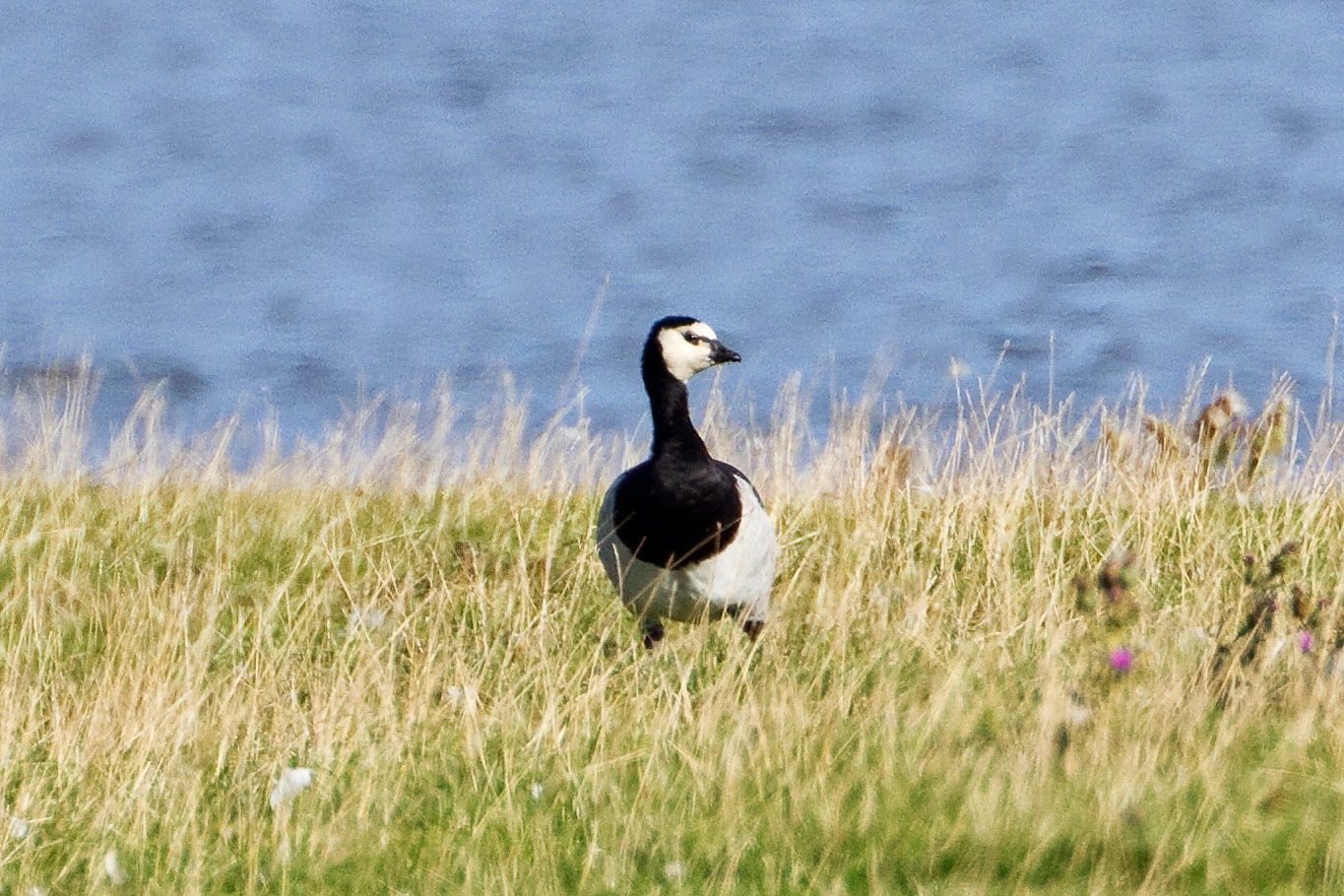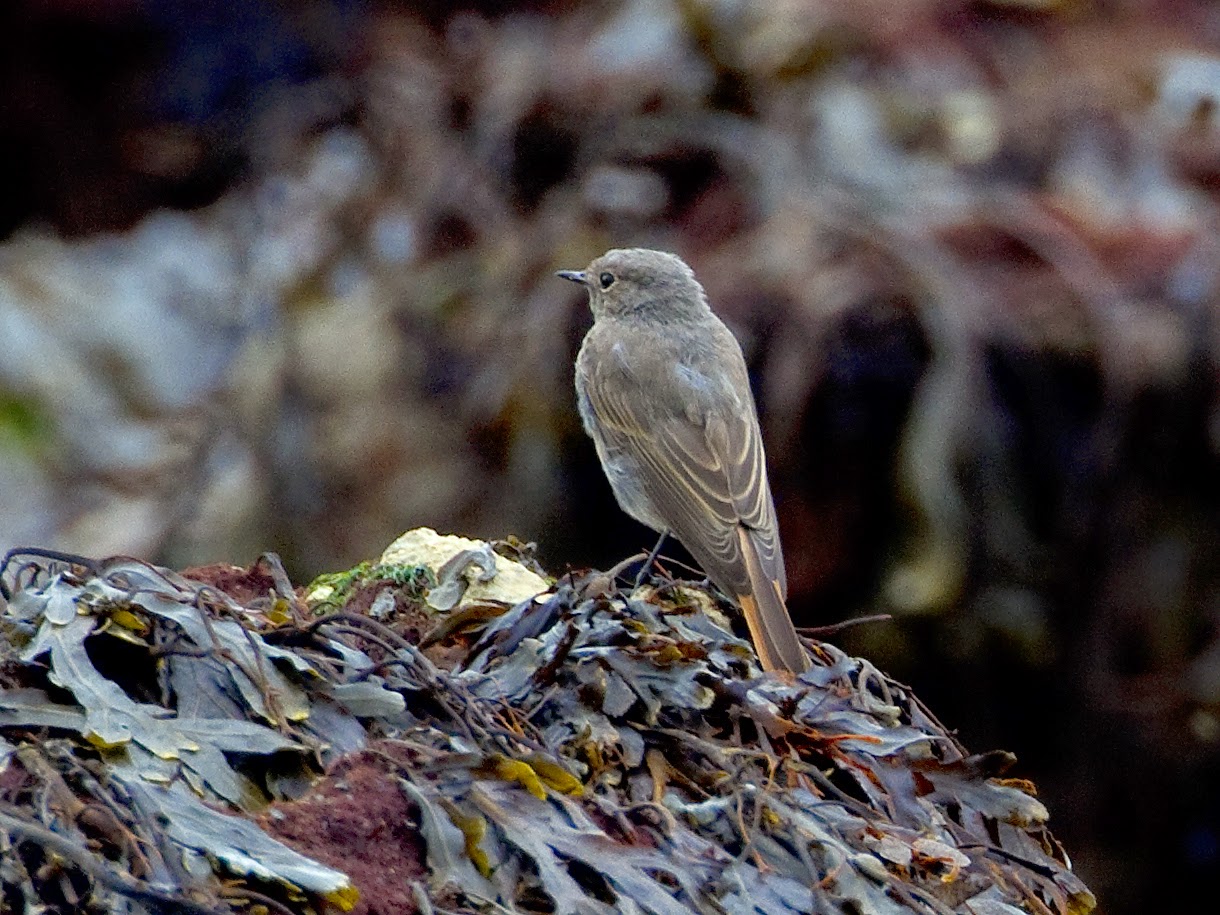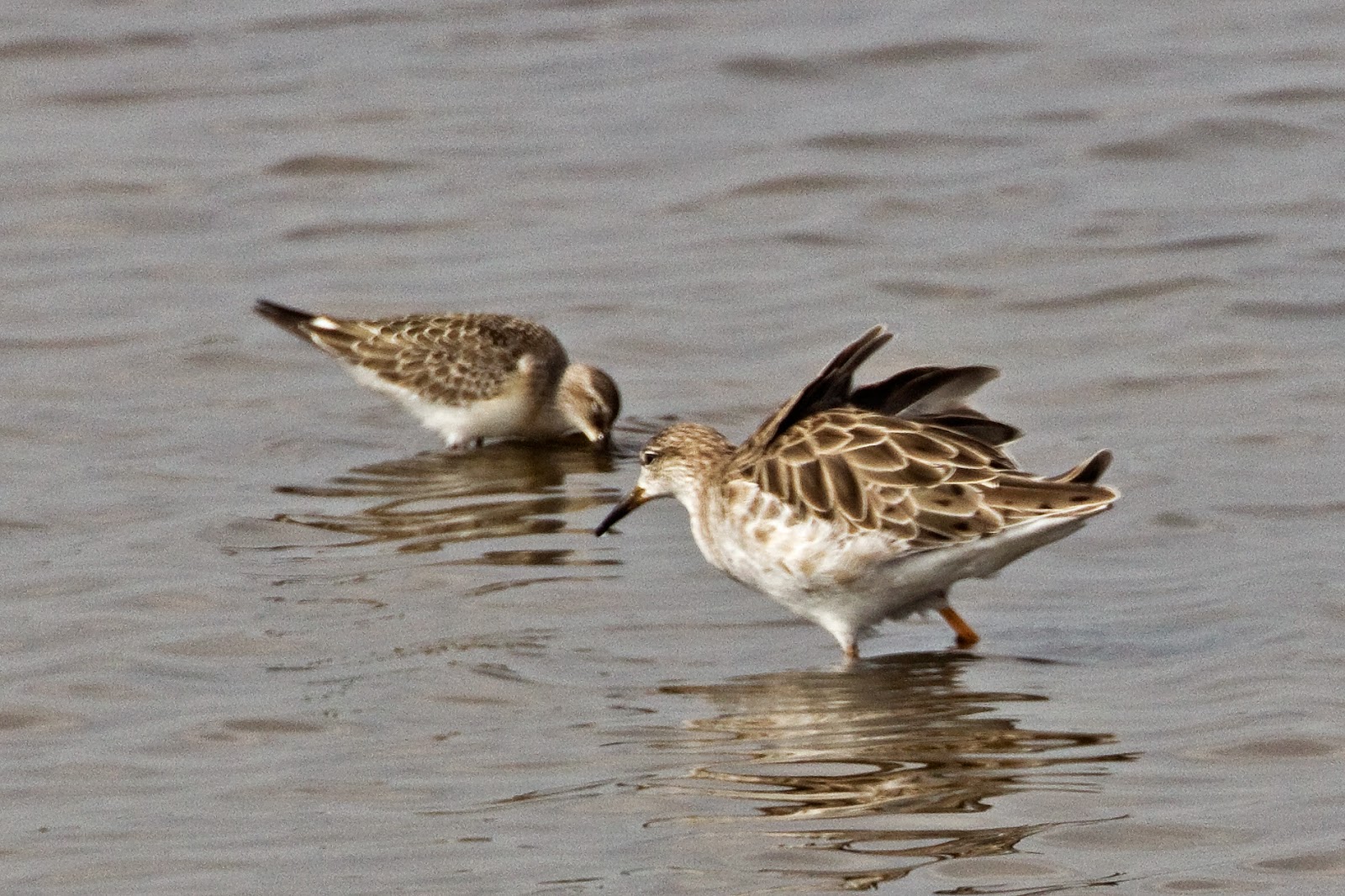A three day stay down in Canterbury gave me the chance to visit a few of the birding sites around the Kent area. It's always worth a stop at Scotney Pits on the way down to scan the geese and wildfowl flocks and this time I found the Barnacle Goose flock close enough to photograph. Although I did have to look hard to find one that looked a pure bred Barnacle. Most seem to be Barnacle/Emperor hybrids.
 |
| Barnacle Goose |
Next stop was Dungeness and for once it did not deliver. All I had there were distant views of all the usual birds with the highlight being a female Red-crested Pochard. A disappointment as Dungeness usually manages to turn up something out of the ordinary. Leaving early afternoon, with the weather starting to cloud over and with only the pictures of the Barnacles in the bag, I was in two minds over giving up for the day. Fortunately I decided to take a detour via Dover and stopped off in Samphire Hoe.
For anyone that does not know about the Hoe, it is a platform created at the base of the cliffs to the west of Dover using the spoils from the digging of the Channel Tunnel. It covers about thirty hectares and is accessed by a tunnel through the cliffs from the east bound carriage way, when leaving Dover on the A20. Observers have recorded 230 species of plants, 30 species of butterfly, 150 species of moth, and 213 species of birds there. It's well worth a visit if you are down that way. It has easy access and the wardens are always helpful with any sightings they have made.
That was the case again this time and within a couple of minutes of arriving I had locations for a Pied Flycatcher, Redstarts, and Black Redstarts. It wasn't going to be easy in the rapidly fading light. Shutter speeds were around a 1/60 of a second at ISO400, and holding a 700mm lens combination steady at that speed is not easy. Still I got some shots and although they are a little soft I was quite pleased with them. Fortunately you do not have to look at all the ones that failed.
 |
| Pied Flycatcher |
 |
| Redstart |
The Redstart was very obliging and gave close views. The Pied Flycatcher was a bit harder and I only ended up with the one decent picture. By then the rain had set in and there was no point in looking for the Black Redstarts.
Needless to say I was back down there at 0700 the next morning when the site opened. The light was superb, bright but with a thin cloud cover, giving a very diffuse but clear light. Pictures were going to be really good and would have been if the birds were still there. The Redstarts had disappeared completely, the Pied Flycatcher was still there but it was now in a wooded gulley half way up the cliffs and beyond the range of the camera. I was gutted, I waited at the bottom for a couple of hours but there was no sign of it coming down.
There was some consolation in the Black Redstarts. I had been warned that they were hard to photograph. They did not allow close approach and a small black bird hunting over black seaweed covered rocks was not going to be easy. I did try concealing myself in amongst the rocks and waiting for them to come to me but they obviously new that I was there and avoided the area. On top of that it was uncomfortable and you do get some strange looks from passers bye, when they notice you lurking with a paparazzi style camera, apparently taking pictures of bits of seaweed.
 |
| Black Redstart |
 |
| Black Redstart |
The pictures don't really do the bird justice. Here's one taken a couple of years ago under better conditions.
 |
| Black Redstart taken at Climping Beach Sussex - October 2012 |
I had another look for the Pied Flycatcher but it was nowhere to be seen. There were a couple of Ravens and a Peregrine squabbling around the cliff tops but they were too far away for a picture but I did managed a few other shots around the site.
 |
| Wheatear |
 |
| Whitethroat |
and there was an unusual visitor to one of the feeders. It makes a change from the usual tree rats.
 |
| Brown Rat |
The route home was along the north coast of Kent with the main stop being at Oare Marshes There were thousands of birds there with some of the most spectacular being the Starlings. It's not just their synchronised flying that is the attraction, this time of year they have spectacular iridescent colours that make them look more like a tropical bird.
 |
| Starling |
Apart from the wildfowl the majority of the other birds were Lapwings and Golden Plover but there were also Ruff and Curlew Sandpiper amongst them.
 |
| Curlew Sandpiper and Ruff |
 |
| Ruff |
 |
| Golden Plover with Starlings and what looks like another Ruff with its head in the water. |
You can get close to the birds at Oare but the better picture opportunities are in the afternoon when the sun is over your shoulder. There is a path round behind the birds if you are there in the morning but you are further away from them.


No comments:
Post a Comment